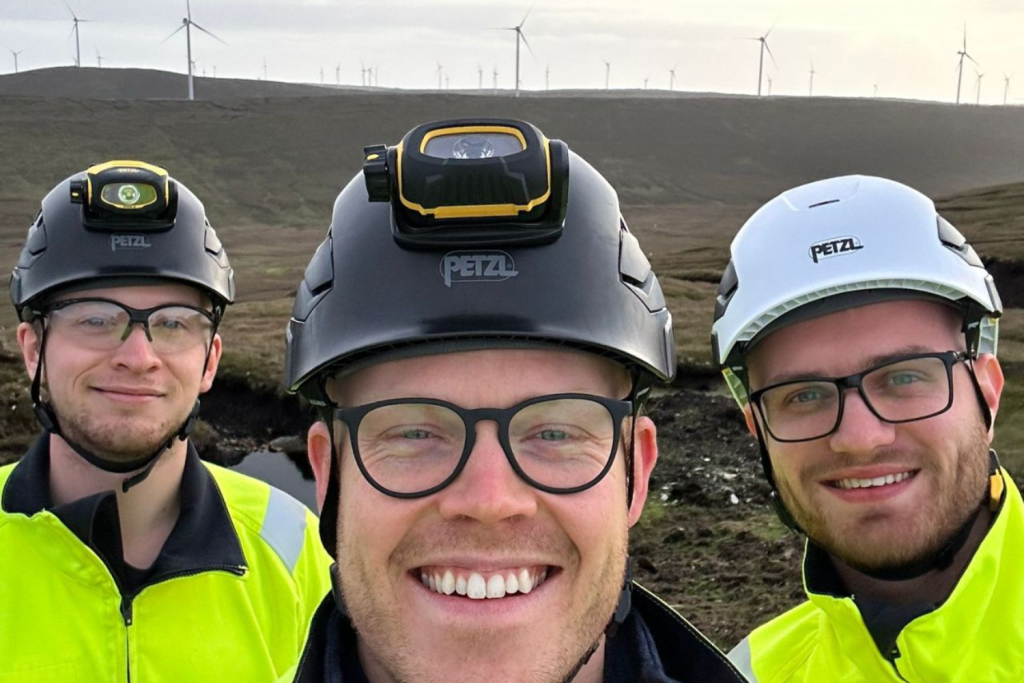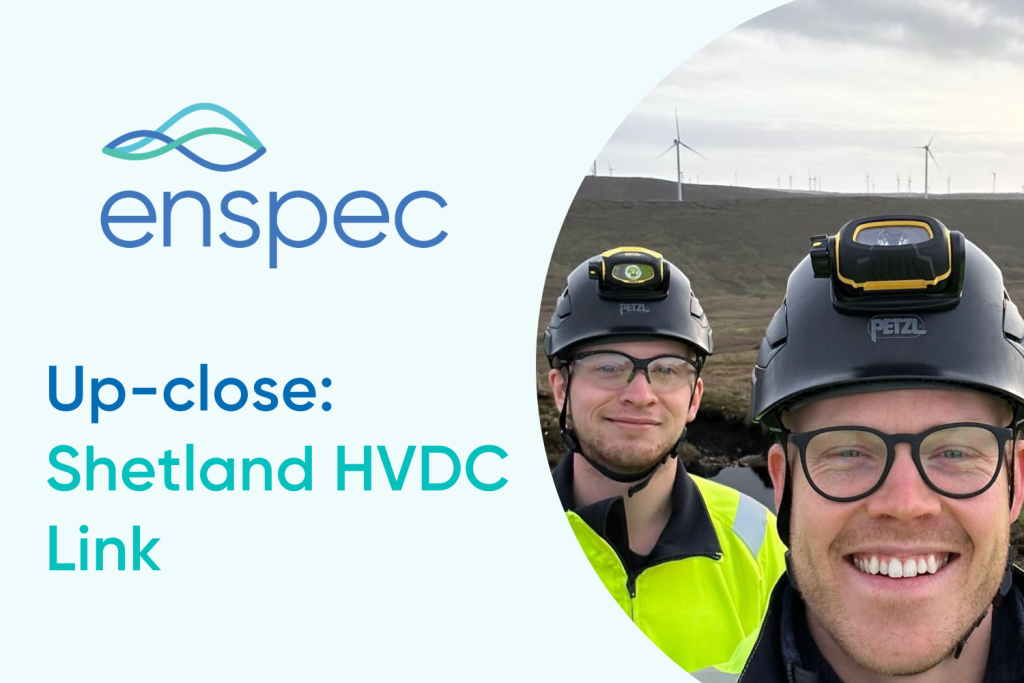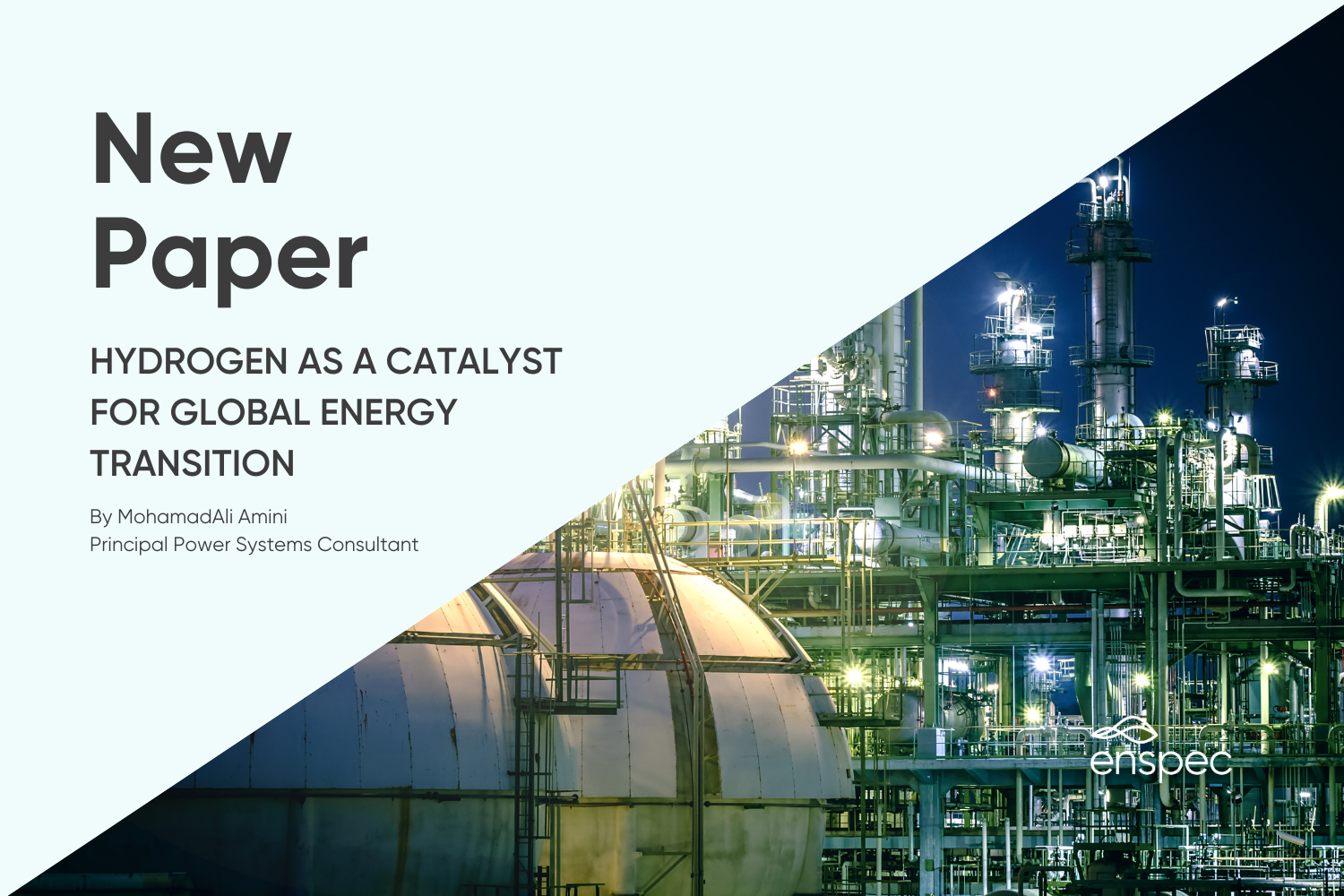With the £660 million Shetland High Voltage Direct-Current (HVDC) Link in the North Sea nearing full energisation, CTO Tim Rastall reveals the role Enspec has played in the 260-kilometre subsea cable project and what comes next.
Could you explain a little more about the Shetland HVDC Link Tim?
Sure, it’s a major clean energy infrastructure project which connects Noss Head in Caithness on the north west coast of Scotland and Weisdale Voe in Shetland. It’s a key project, which for the first time will link Shetland to the Great Britain transmission system.
In June the 260-kilometre cable transported first power from the 443 MW Viking Wind Farm in Shetland to Great Britain, with full energisation expected later this summer.
How did Enspec become involved with this landmark project?
Viking Wind Farm is one of Scottish & Southern Electricity Networks’ (SSEN) sites and they approached us when they were doing initial power system studies. We specialise in Point-on-Wave switching (PoW) technology which allows you to switch transformers while aiming for a precise one millisecond window and switching without excessive transient, which in turn doesn’t create voltage depression.
We were talking to SSEN about the problems they had for between six months and a year because these projects have a very long timescale.
What happened next?
SSEN decided they wanted to fo with our technology. There’s a big contractual chain, with SSEN the developer, Vestas the wind turbine and transformers supplier and ABB the company that supplied the switchgears and sourcing of the point-on-wave relays. AQs the local UK expert in PoW, Enspec helped with the application installation, commissioning and testing.
In fact, we had the honour of commissioning and testing 103 turbine transformer PoW systems, ensuring seamless power maintenance for the Viking Wind Farm during HVDC downtime.

How long did it take Enspec to commission and test over 100 turbines?
We were there, sometimes up to a team of three engineers, from September 2023 before finishing in February of this year.
The turbines are all spread out across the site and we needed 4x4s to gain access as well as following safety rules including an SAP (senior authorised person) being there to give you access and enable the carrying out of switching schedules.
For various reasons it took us three days to do our work on the first turbine. In one day we managed to complete our work on five turbines in a single day. In some weeks we didn’t do one turbine, due to the weather and a variety of power issues which commonly occur on such a large site that is in the testing stages. But looking back it averaged out at roughly completing our work on one turbine per day over the time we were involved in that part of the project.
Why is the Shetland HVDC so important from your perspective?
The available wind energy that can be harnessed on the Shetland Islands is way in excess of any power requirements that are ever going to be needed on the Shetland Islands. You effectively have this massive natural resource that can benefit the UK and its energy requirements, but it’s been isolated on an island.
The only way to harness that is through some sort of link, basically from the Shetlands to mainland UK, which is why the HVDC link is so important. If you were going to transmit power at low voltage over a 260 kilometre line, by the time it actually gets to the UK, you’re not going to have a lot of power left because it’s going to have been heating the cables and you’ll lose a lot of energy. But the power will be sent over a large distance with minimum losses, so that the power will land on the UK mainland and then be usable energy.
Another key aspect is that this is just one wind farm on the Shetland Islands. There’s loads more in the planning. With Shetland being such a major wind resource the link is going to allow us to harness even more power and bring it back to the UK where there is a significant need for the electricity.
Does the HVDC project symbolise Enspec’s ongoing commitment to innovation and sustainable energy solutions?
Enspec are acutely aware, as everyone else is, that there is a global need to move to renewable energy. We need to act on it. We need to do it. We need to move over to renewable energy. It’s a massive undertaking that no individual person or entity can do. But when you’re moving to renewables, you have massive issues when it comes to power quality and grid connection.
Over the 24 years that Enspec has been in existence, renewables has been our core focus. We try to be a one-stop shop for all things power, quality, grid connection. We see that we have a really important and impactful process to play within the energy transition.
PoW is a prime example as it’s still a very new technology to this type of application (HVDC). Most of the time, when people come across us, they say ‘I didn’t even know this existed. I didn’t even know you could do this.’ We’re pushing forward with innovative technologies and innovative methods to facilitate the transition to net zero and renewable generation.



